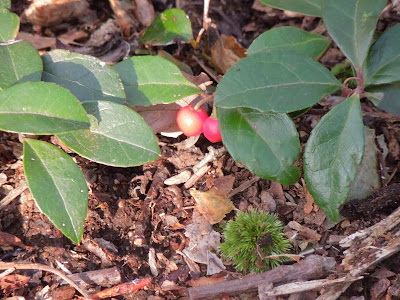I looked around my landscape this past weekend to see what survived the storm and the 3 or 4 light frosts we've had so far. Here are the pictures. Of course we were very lucky that there was minimal damage in our area, with only a short loss of power.
So beautiful, but oh so
Wicked.
Rudbeckia's - these are descendants from some seed heads I gleaned in 2003 from the area that is now used for the
Perennial Demonstration Garden, back when we trialed ornamental plants there.
The variety was
Rudbeckia hirta 'Cherokee Sunset' although you can see if you check the link, they've lost their double petals and picked up some color variations via natural crosses, or reverting to ancestral progenitors from the original hybrid cross, I assume.
Can't complain about the price, though.
The long season bloom time for a perennial is very welcome.
Asclepias turberosa - Butterfly Weed
I collect seed from multiple sources, including the
Wildlife Area, and anywhere else I see the seed pods for this native wildflower and butterfly attractor, so no telling the provenance.
Another milkweed, although native to South Africa. Unique seed pods, leading to some
interesting other
common names. Excellent larval host plant for the
Monarch Butterfly. Seed pods look great in dried arrangements. This is my fourth year growing them, seeds originally saved from Steve's cut flower trials. Although perennial in their native Zone 8 growing area, seeds started indoors in mid March allows for us to grow them as annuals here. I always start a flat or two for the
plant sale, so you can get them then.
Another zone 7-8 perennial grown as an annual here in our climate. These were grown from leftover seeds from earlier year cut flower trials. They were simply marked "Salvia" in a cellophane envelope, so I had no information about them prior to growing them, which made them difficult to sell at our plant sale. They have been blooming continuously since July and haven't yet succumbed to frost, and aside from planting them in late May, I've done virtually nothing to nuture them. More information
here and
here.
I only have middling success growing these from saved seed year to year. Luckily,
Laurie Collins starts them, so when I have a failure, like I did this year, she always comes to the rescue with a few plants for me.
I think this is a dwarf variety,
'Fiesta del Sol', although I didn't mark it when I planted it, so can't be sure.
 |
| Monkshood |
My Monkshood, to go along with
Mary's and Nancy's.
One pepper plant left, surviving not only the frosts and storm, but critter depredation as well. This is an heirloom variety of small, tapered, sweet, orange-when-ripe bell pepper called 'Yummy' that I grow from saved seed every year.
I think of
Jack-in-the-Pulpits as an early, spring woodland species that normally, have gone to seed by this time of year, so I have no idea why this fella is coming up and just starting to bloom now. All my established ones are gone, with just a few of the red berries visible on the ground. I tried googling around for information that would explain this late blooming phenomenon, but came up empty. If anyone out there has more information, please let me know and I'll share it here.
Update: 11:50 pm 11/6 - I sent the picture of the Jack-in-the-Pulpit to Dr. Linda Chalker Scott who responded that the phenomenon is probably an example of
ecodormancy - a plant's reaction to somewhat adverse, or abnormal enviromental conditions. Early season warmth? Mid-summer drought? Late season warmth? I have been unable to find a good source to further describe and explain the term. You can try
here, and
here. There doesn't appear to be a Wikipedia entry. I forwarded the picture to Dr. Bert Cregg, another one of the Garden Professors, who asked for examples in his post linked above.



















































